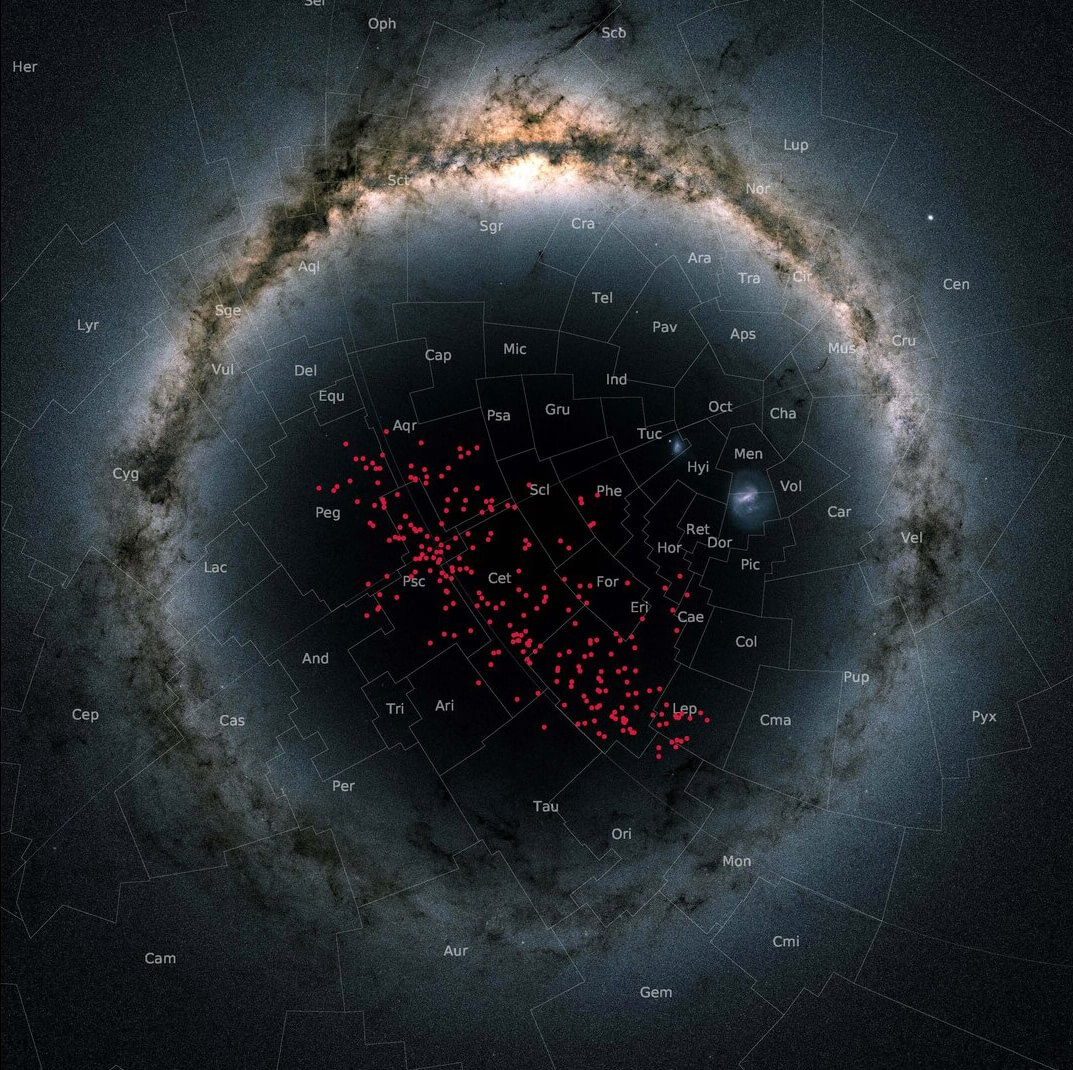Using data from the ESA Gaia space telescope, astronomers have identified a stellar stream that currently crosses the solar neighborhood at a distance of only 326 light years from us. Due to its proximity to the Earth, it is an ideal space laboratory that allows you to test models of cluster destruction, measure the gravitational field of the Milky Way, and study populations of extrasolar planets.
Most star clusters in our galactic disk quickly dissipate after their birth, because they do not contain enough stars to create a“ deep gravitational hole. ” However, even in the vicinity of the Sun, there are several clusters with a mass sufficient to remain connected for several hundred million years. Therefore, in principle, such large, stream-like remnants of clusters or star associations should exist in the Milky Way disk.
-Stefan Meingast, lead author of the study from the University of Vienna (Austria)
Our own galaxy, the Milky Way, is home to star clusters of various sizes and ages. We find many young clusters in molecular clouds, fewer middle-aged and older clusters in the galactic disk, and even fewer massive old globular clusters in the halo. All of these clusters, regardless of their origin and age, are subject to the action of tidal forces in their orbits. When there is enough time, the gravitational forces of the Milky Way tirelessly tear clusters apart, scattering their stars.
Thanks to accurate measurements of the satellite Gaia, astronomers were able to establish the three-dimensional motion of stars located within a thousand light years from the Sun. Having carefully studied their distribution, scientists identified a previously unknown and unexplored group of luminaries. Members of this family showed exactly the expected characteristics of the cluster of stars born together by the gravitational field of the Milky Way stretched by the gravitational field.
The identification of nearby streams in the galactic disk is the same as searching for a needle in a haystack. For a long time we looked through this unknown previously, a stream located surprisingly close to the Sun, without noticing it. But now we know for sure that it exists and it is huge.
-Juan Alves, co-author of the study from the University of Vienna
Due to the limited sensitivity of Gaia, the sample contained only about 200 sources. However, extrapolation suggests that the stream must contain at least four thousand luminaries, which makes its structure more massive than most of the known clusters in close proximity to the Sun, and extending for about 1300 light years. Astronomers also determined the age of the river of stars, which turned out to be about one billion years old, and, based on the form of the stream, determined that it had already completed four complete turns around the Milky Way.
Nearby stellar stream
Click To Tweet
The post Nearby stellar stream appeared first on Upcosmos.com.
